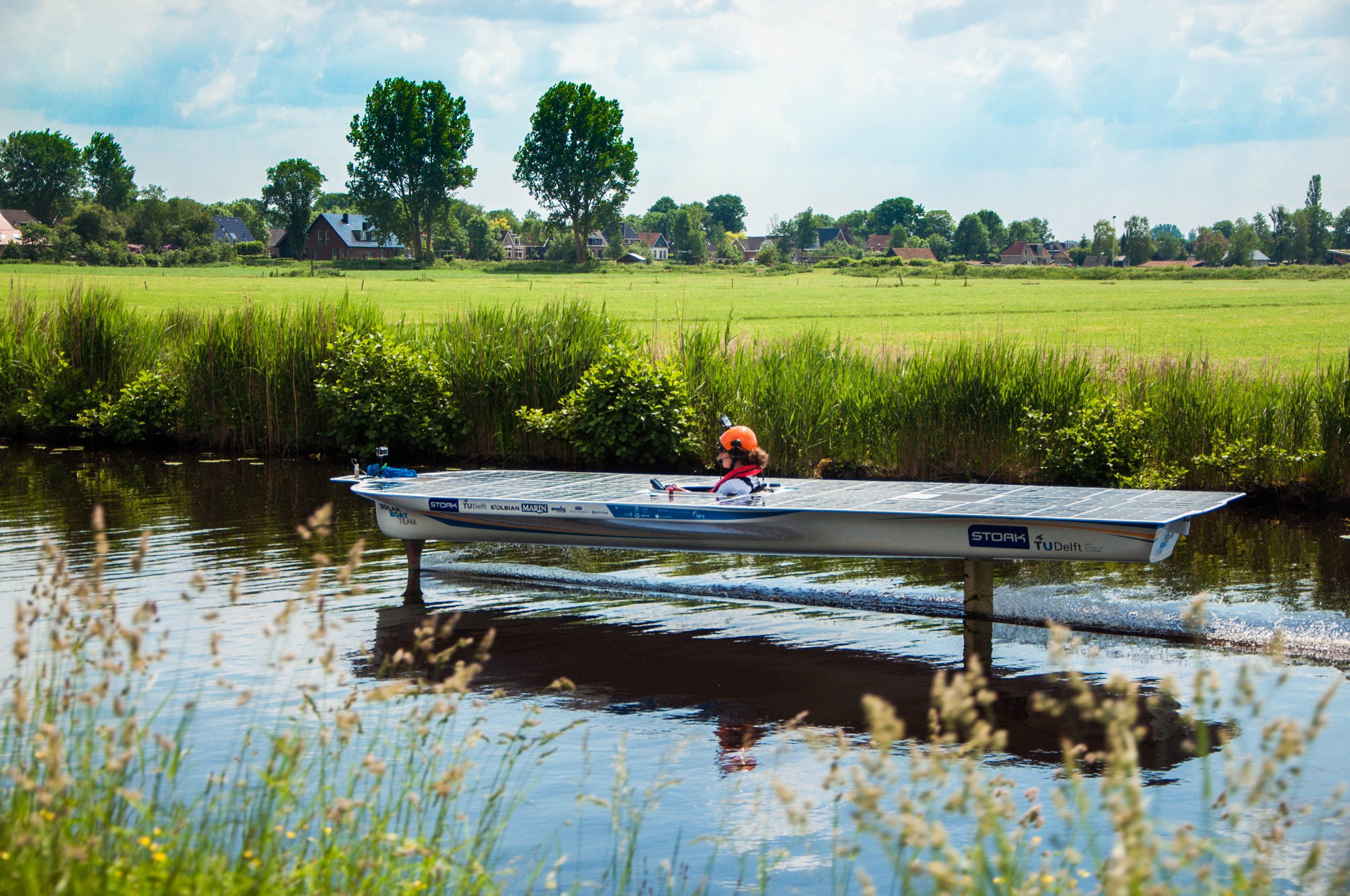Steering a hydrofoil is much like riding a bicycle, or so TU Delft students demonstrate with their mathematical model that predicts the roll and yaw of these boats.
TU Delft Solar Boat Team designs and builds hydrofoils powered by solar energy. The newly developed model should improve the design process. (Photo: TU Delft Solar Boat Team)
Hydrofoils use a wing like structure mounted beneath the hull to lift them out of the water when gaining speed. Steering them is similar in nature to riding a bike, TU Delft students Johan Schonebaum and Gijbert van Marrewijk (Faculty of Mechanical, Maritime and Materials Engineering) show in their article ‘An Experimentally Validated Dynamical Model of a Single-Track Hydrofoil Boat’, which was published in the March edition of the Journal of the American Society of Naval Engineers.
“If you risk toppling over with your bicycle, you will instinctively steer in the direction of your fall,” explains Schonebaum. “This correction principle can be explained by physics: by doing so you ensure that your support points – your wheels – remain in balance with the centre of gravity. We have now proven, for the first time, that this principle of bicycle stability also keeps a hydrofoil steady.”
Schonebaum and Van Marrewijk developed their model after subjecting the 2016 TU Delft Solar Boat to various experiments. They performed their research under the supervision of bicycle researcher Prof. Arend Schwab (3mE faculty).
‘This model will save future teams many working hours and frustration’
The model can predict the roll and yaw motions of hydrofoils when still in the drawing board phase. The latest solar boat, which is being prepped now for the summer competitions, amongst which the race in Monaco in July, has been developed using the insights of the two young engineers.
“Before we had this model, the boats were developed through trial and error,” says Schonebaum, who, together with Van Marrewijk, participated in the Solar boat competition for several years. “This model will save future teams many working hours and frustration.”
The two students also developed a simulator for training purposes, allowing pilots to get the hang of sailing a hydrofoil before actually navigating on the water. The mathematical model is built into this training tool.
‘Navigating a hydrofoil is much more difficult than riding a bike’
A tool like this is by no means an excessive luxury, Schonebaum explains. “Though some of the physical principles dictating hydrofoil and bicycle stability are the same, navigating a hydrofoil is much more difficult than riding a bike,” he says. “When riding a bicycle, you experience forced feedback on your handlebars. If your bicycle tilts in one direction, your front wheel automatically exerts a force directing the bike in that same direction. Hydrofoils do not have this mechanism.”
And neither do they have the gyroscopic effect that acts on the wheels and which gives bicycles an intrinsic degree of stability. The gyro effect dictates that the faster it spins, the more difficult it gets to change an object’s axis of rotation.
Their publication won the students a prize from The International Hydrofoil Society in the US worth 2,500 dollars. “Since receiving the prize, we regularly receive phone calls from hydrofoil companies asking for advice,” says Schonebaum. He and his fellow student have started a consultancy company.
Do you have a question or comment about this article?
tomas.vandijk@tudelft.nl


Comments are closed.